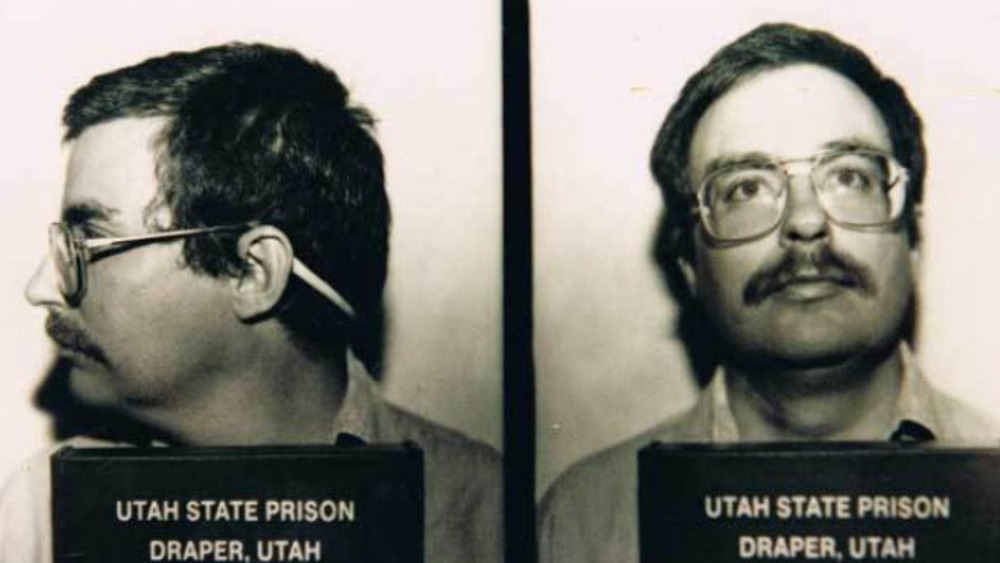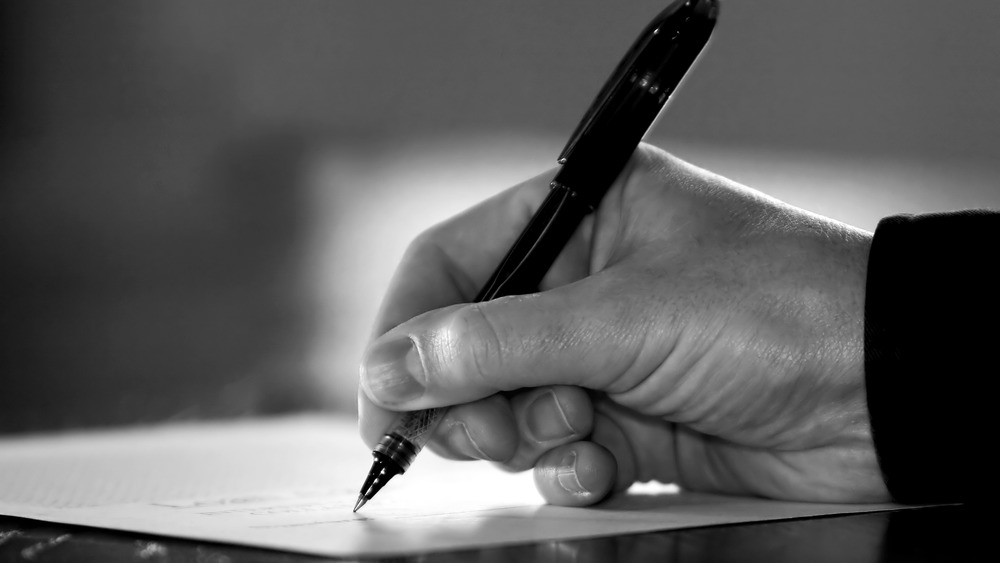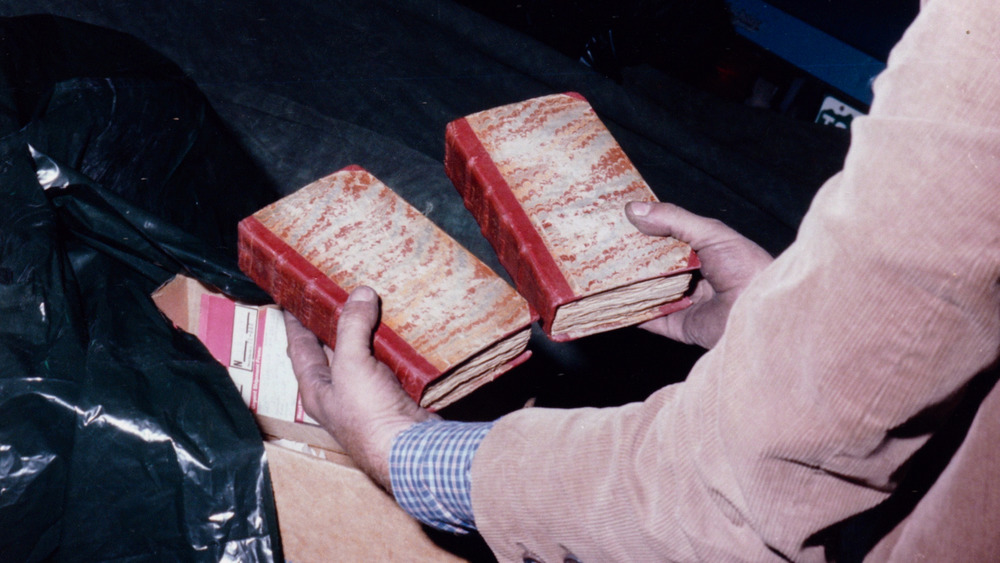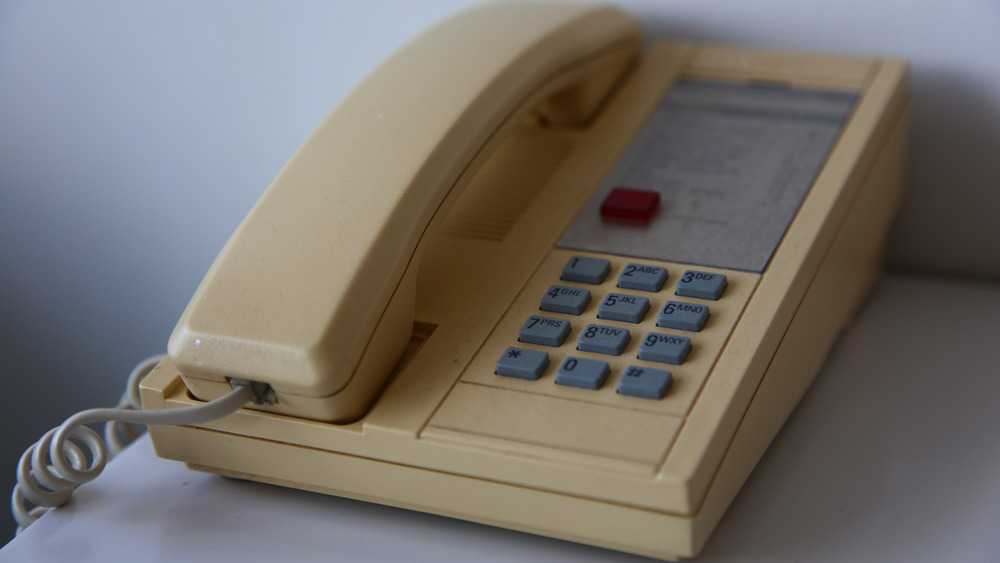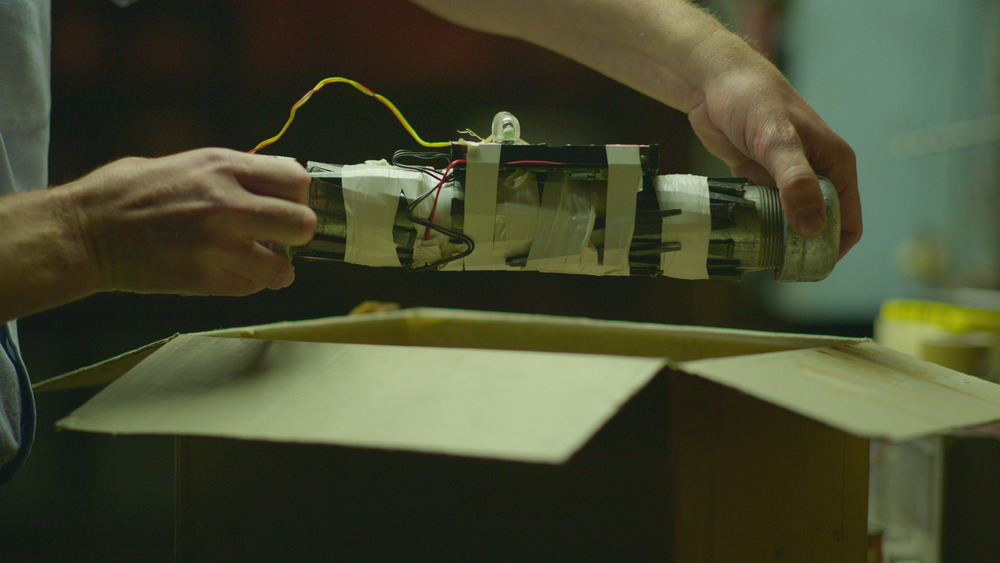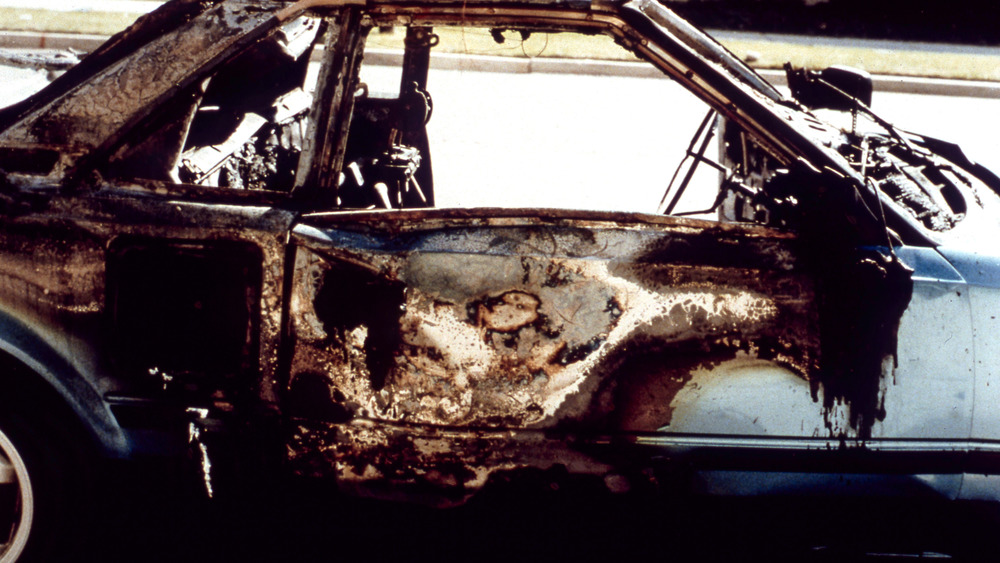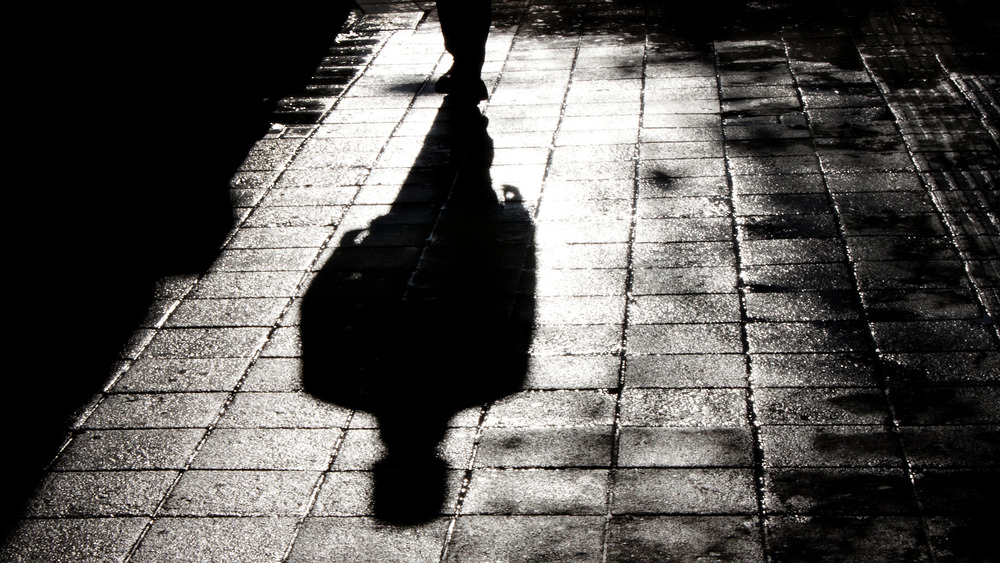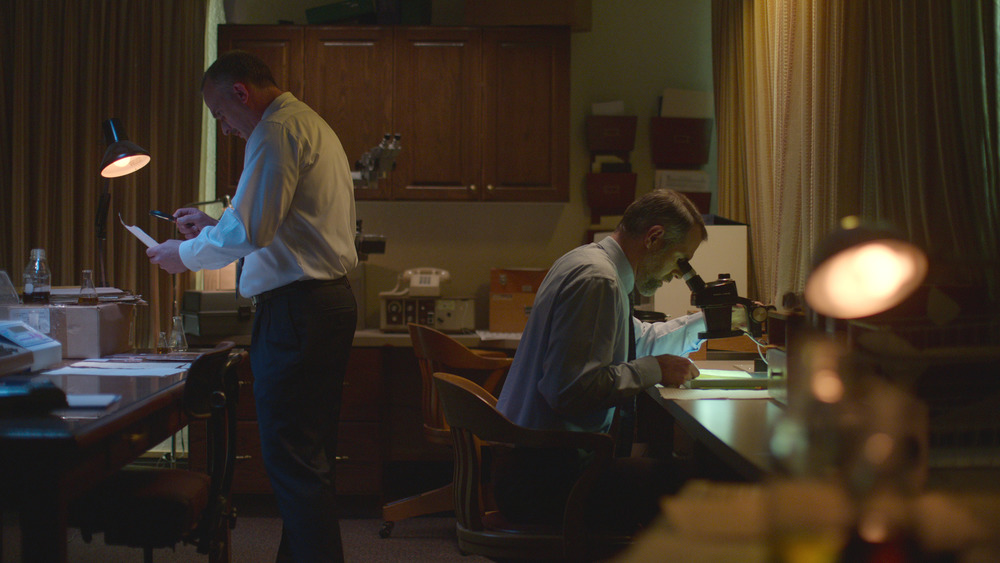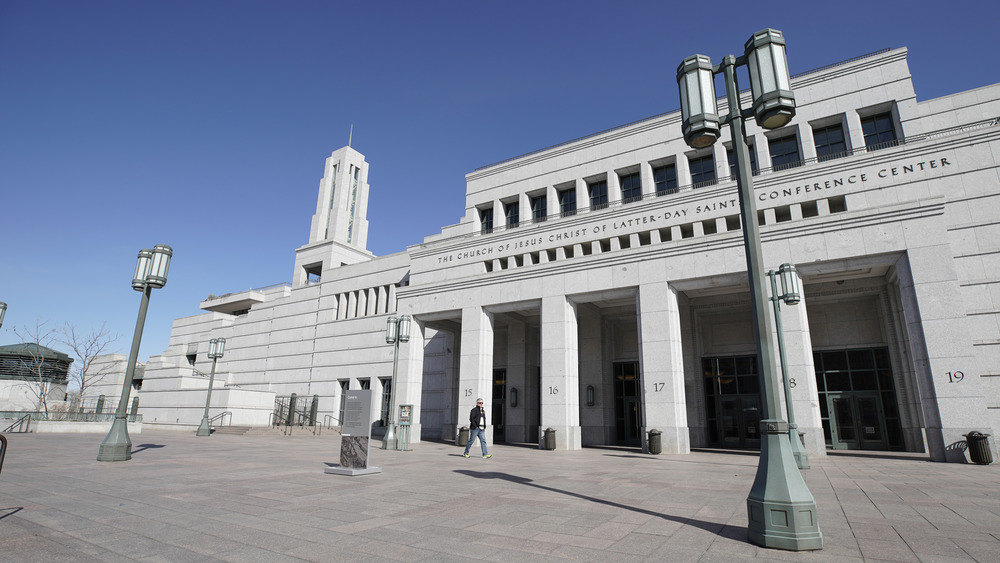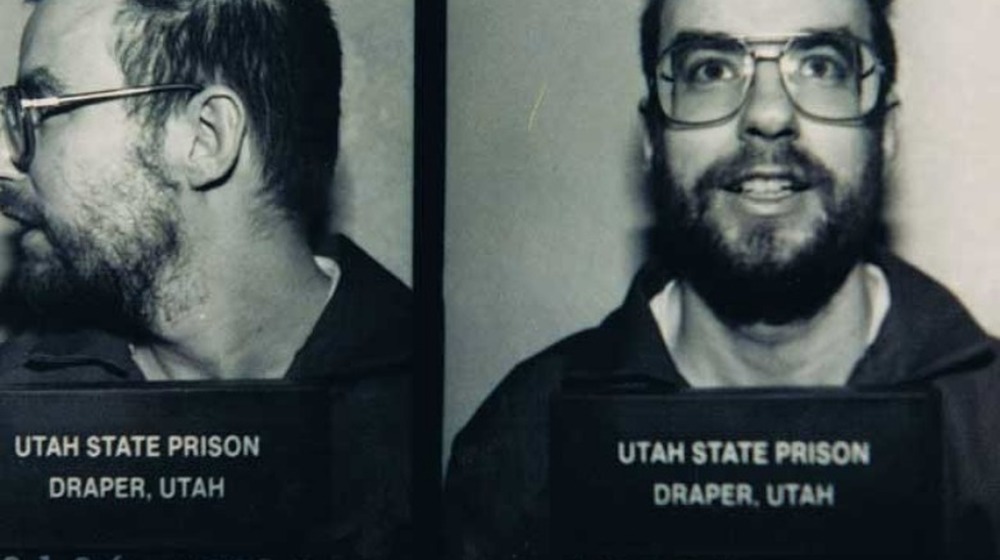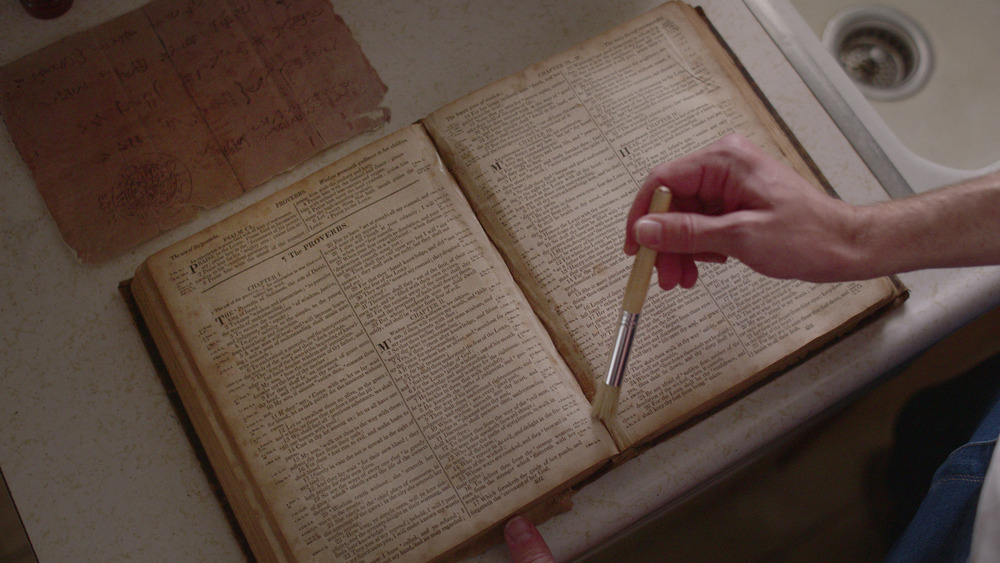1985's Salt Lake City Bombings Explained
Bombings are some of the most terrifying events in human history. Other types of murder are usually contfined to small area, whereas bombings have an effect that spans a wide radius, with the potential to injure a vastly larger number of victims. Also unlike other, more personal methods of murder, victims don't usually see bombings coming. There's no armed assailant running toward them with a knife in hand, no mysterious stranger pulling out a pistol or binding them with a gag from the back seat. Bombing victims go along living their everyday lives until they're interrupted with a split-second bang that leads to total and complete oblivion. And that's probably what the final moments of life were like for the victims of the 1985 Salt Lake City bombings.
This series of three bombings was one of the most confusing bombing cases in American history. Usually, when a bomb goes off, some individual or some organization will step forward to take credit for the explosion. Bombings are seen more often in acts of terrorism than personal murders, but not in this case. In October 1985, a criminal by the name of Mark Hofmann decided to take his career beyond the world of forging and into the disgraced arena of murder as a way to cover up a complicated scheme involving the Church of Jesus Christ of Latter Day Saints (LDS).
Mark Hofmann's life of forgery
The perpetrator of the 1985 Salt Lake City bombings, Mark Hofmann, had lived his entire life as a career forger, though this wouldn't be discovered until the subsequent investigation. As far as everyone around him was concerned, Hofmann was a dealer of rare documents, and he probably did conduct some legitimate business along with his more deceptive work. But many of the documents Hofmann bought and sold contained imperceptible forgeries (if they weren't outright fakes) that artificially increased their value.
According to the Deseret News, Hofmann had released a four-page letter detailing his crimes following his arrest for the bombings, and one of the topics he discussed was how his life of forgery began. Even as a child, the Salt Lake City bomber got his rocks off by conning his fellow man. It began with the thrill of performing simple magic and card tricks before morphing into crimes that included altering coins so he could sell them to collectors as rare or incorrectly stamped currency. It's a surprisingly lucrative trade. By the time he was 14 years old, his talents had grown, and young Hofmann devised a method for forging historical documents that he was certain would go undetected, and his top-shelf forgeries fooled experts for decades. The forgeries pertinent to the Salt Lake City bombings, as the LA Times points out, included a collection of Mormon religious documents that kicked off an internal crisis within the church.
Mark Hofmann shook the Mormon Church with new discoveries
The most famous documents master forger Mark Hofmann ever dealt with are the mysterious McLellin collection and more specifically, the Salamander Letter. A little background: The Church of Jesus Christ of Latter Day Saints believes it began, according to the church's official website, when a prophet by the name of Joseph Smith was visited by an angel of God and eventually led to The Book of Mormon, gold tablets containing the blueprint for their religion, by a resurrected profit in the early 1800s. As Times and Seasons, another Mormon publication, explains, the Salamander Letter ripped this origin to pieces and recompiled it into something blasphemous.
The publication says the letter appeared to have been written by Smith's disciple Martin Harris and claimed that instead of God's hand guiding Smith to the golden book, Smith had been visited and instructed by a magical, talking white salamander. The salamander was a creature known to folklore, whose appearance suggested the Mormon church had its origins not only in God but in a folk magic otherwise deemed blasphemous.
As you can imagine, the attempt to rewrite Mormon religious history wasn't an easy thing for people to swallow. Some church leaders bought into the deception, while others actively fought against it. The documents appeared legitimate in every sense, and they threatened to tear the church apart, leading to claims of the Mormon church actively suppressing the new documents, which the LDS church maintains never happened.
Mark Hofmann's alleged death threats
The contradictory information posed in the Salamander Letter, if indeed true as Hofmann claimed, had the potential to shake the Mormon church to its core and drive away its believers, so it's not surprising that people were just a tad bit upset about its "discovery." It's only natural to fight against new information that rewrites everything you once knew and held dear, and people have proven time and time again that they'll take this cognitive dissonance too far. What allegedly came for Mark Hofmann after his forged documents gained media attention, as detailed in The Mormon Murders: A True Story of Greed, Forgery, Deceit, and Death by Steven Naifeh and Gregory White Smith, was a string of death threats.
The text includes several examples of Hofmann discussing what he claimed to be death threats with his colleagues and customers, sometimes as an excuse to keep his name disassociated with the McLellin collection's sale. Others allegedly occurred after the first two bombs had gone off. It's possible some of these threats were legitimate, but it's unlikely given everything we know about the bombings now. What's more likely is that Hofmann claimed he'd been threatened so he'd appear to be another victim, or maybe Hofmann just likes threats. According to the Utah History Encyclopedia, coded threats directed to the Board of Pardons were found in Hofmann's cell after a hearing in 1988, and he was likewise caught making similar threatening comments to his peers.
The first bomb goes off
Victims: The LDS Church and the Mark Hofmann Case by Richard Eyring Turley tells us that Mark Hofmann had been doing business with Steve Christensen to "secure" the McLellin collection and "donate" it to the Church of Jesus Christ of Latter Day Saints. Christensen, a Mormon, seems to have though he was doing the right thing. He even helped Hofmann secure financing for the purchase. Unfortunately, it wouldn't be long into the process before he became a victim of Hofmann's bombings.
The dealings were shady from the beginning. Hofmann disappeared for a couple of weeks when he supposedly ran off to meet the collection's seller, the whole time skipping out on a bank loan he'd obtained for the purchase. The documents, for what they were believed to be, proved magnificent enough to keep Christensen's mind off the oddities in the way Hofmann conducted his business. Had anyone looked deeper into Hofmann or the McLellin collection, the Salt Lake City bombings might have been avoided.
On October 15, 1985, Christensen opened a package outside of his sixth-floor office at around 8:15 AM, according to an LA Times article from the day after, only to have the first of the three bombs explode, killing him. Hofmann admitted in his 1988 letters, as noted by The Salt Lake Tribune, that he killed Christensen to prevent any incriminating information he might have had from reaching authorities and ruining two forgery schemes Hofman had made the unsuspecting victim a part of.
A second bomb follows
The second bombing, which occurred on the same day, wasn't part of the cover-up exactly. Instead, this explosive package, as Hofmann explains in his letters (via The Salt Lake Tribune), was a ingenious and deadly diversion. The package looked very much like the one that had killed Christensen. A box wrapped neatly in brown butcher paper, according to The Washington Post, was placed outside of Gary Sheets' home, addressed to Sheets. The bombs inside the two packages were also the same: simple pipe bombs designed to explode when the package was opened. Like Christensen, Sheets was also a Mormon, but his connection to the first victim was of a more professional nature. Sheets had been Christensen's employer at Coordinated Financial Services (CFS) before Christensen resigned and assisted Christensen in financing the McLellin deal, but that was really Sheets' only connection to the Salamander Letter scheme, according to Victims: The LDS Church and the Mark Hofmann Case.
Though the second bomb was addressed to Gary Sheets, it wasn't he who became the unlucky recipient of Hofmann's package. Sheets' wife, as noted by the LA Times, was the one who found the mysterious box and became Hofmann's second victim. Hofmann may have missed, but the bomb served its purpose.
In Hofmann's letters, he claims that he had convinced himself that killings were in his family's best interest and that this was the only way he could rationalize what he was doing, which brings us to the final explosion.
A third bomb explodes
The third and final pipe bomb to go off in this series of Salt Lake City bombings occurred the following day on October 16, 1985. This bomb, estimated to be larger than the first two, wasn't meant for one of Hofmann's victims — Hofmann built this one for himself. The bomb went off in the front seat of his car while he sat next to it, though according to the LA Times, he lied about this at first and claimed it had exploded as he was getting into his car. The bomber walked away from this explosion with comparatively few injuries — a ruptured eardrum, a missing kneecap, and a few minor wounds from the shrapnel — but he also walked away a suspect.
According to the Associated Press, the authorities had obtained a search warrant for Hofmann's home before he set off the final bomb, but they didn't need it. They would find bomb-making materials inside his ruined car after the explosion. The forger-turned-bomber recalls in his letters (via Deseret News) knowing that the "jig was up" the night before. Hofmann says this bomb was a suicide attempt. He supposedly believed ending his own life was the only way he could keep his family safe from his guilt, not only from his forging crimes but the murders as well. The county prosecutors wrote during Hofmann's trial (via the Associated Press) that they believed his suicide attempt claims were nothing more than a play for leniency.
The bombings were believed to be the work of a hired assassin
Though Mark Hofmann was considered a potential perpetrator by the local authorities before the final bombing was in the books, he wasn't exactly the strongest of suspects. From what authorities knew after the first two bombings, Hofmann had a meaningful connection to Christensen because of the depth of their work on the McLellin collection, but his connection to Sheets was rather weak. Of course, that was the reason Hofmann planned the Sheets attack from the beginning.
With the only ties between Hofmann and the others being the McLellin collection and the Salamander Letter, authorities believed, according to The Washington Post, that they were looking an assassin hired for one of two motives. The first, and the one they considered to be the most likely, had to do with Sheets' company, CFS. As the LA Times pointed out at the time, the company had been on a downturn, sustaining heavy losses and probably angering a few clients along the way, and since Christensen had only recently resigned from CFS, both of the victims had stronger ties to the company than they did to Hofmann.
The other possible motive questioned by investigators had to do with the controversy surrounding the Salamander Letter, but it wasn't Hofmann they were worried about right off the bat. Instead, they believed the attacks could've been committed by a member of the Mormon church or at least ordered by someone for similar religious reasons, a line of thinking that would make Hofmann a target.
A year-long investigation
The investigation following the 1985 Salt Lake City bombings was a bit of a mess. The evidence against Hofmann wasn't very convincing, and it's one of the main reasons the investigation took so long. The initial evidence — potential bomb-making materials found in his vehicle, an eyewitness who saw someone matching Hofmann's description deliver the package to Christensen (via The Salt Lake Tribune), and the lies Hofmann had been caught in — was thin enough that, according to the LA Times, the FBI and prosecutors thought the local police were being a bunch of dummies. The debate was dividing the agencies. The publication notes that one federal prosecutor walked out of a presentation claiming the pro-Hofmann camp had "the wrong man." They needed more substantial evidence.
That's when a pair of forensic document examiners, according to Western Forensic Document Examiner, did the unbelievable. The McLellin collection had been examined by everyone, and even the FBI believed it to be authentic, but George Throckmorton and William Flynn found an overlooked discrepancy that cracked the case. The ink and the paper Hofmann had used was authentic to the time period, and for all intents and purposes, the Salamander Letter looked legit. It did, however, have a pattern of cracks in the ink that the examiners were able to match to a Joseph Smith signature — the only signature on another piece from Hofmann's collection. Hofmann had forged the signature to make the document worth more money, and that signature got him busted.
A wave of fear and paranoia
After the Salt Lake City bombings took place in 1985, an unsettling change swept through the once trusting and peaceful local Mormon community. Three bombs had gone off. Were these targeted attacks, or was it the work of a mad bomber? Who was next? With the suspect still on the loose, nobody seemed to know the answer. Fear and paranoia spread like a disease. The Church of Jesus Christ of Latter Day Saints and its disciples were restless, unnerved, and scared.
According to "The White Salamander Murders" by Robert A. Jones, tensions rose to unexpected levels. The local bomb squad's bomb-smelling dogs were overtaken by exhaustion from the sheer number of suspicious packages reported to the authorities immediately after the bombings. Document collectors and dealers left the city, fearing that if others in the same line of work were being killed, maybe they were next on the list. In one case, a deliveryman was beaten and chased away because a package he'd dropped off matched the descriptions of the ones that killed Sheets and Christensen. The poor guy was just doing his job, and Hofmann had ruined even that.
The sheriff in charge of the task force investigating the Salt Lake City bombings at the time said, though he was adamant that their top priority was preventing any more bombings, that the level of fear in the community wasn't surprising, according to an article from the Associated Press on October 16, 1985.
An arrest, a trial, and a conviction
Though the investigation was still ongoing, Mark Hofmann was arrested in February 1986 and charged with the murders of Kathy Sheets and Steve Christensen, as reported by the LA Times, as well as more than two dozen cases of fraud. At trial, the prosecution submitted overwhelming evidence against Hofmann, including eyewitness testimony placing him at the scene of the Christensen bombing, his possession of materials used to make explosives, and, of course, the new evidence proving that he'd fraudulently produced the McLellin collection. He didn't have much choice but to come clean.
According to the Deseret News, Hofmann pleaded guilty in 1987 to what the Associated Press says was second-degree murder and several counts of theft by deception. The bomber likely didn't confess because of a heavy conscience, though. The plea was simply part of a deal that took the death penalty off the table and allowed Hofmann to be eligible for parole at some point in his life, but parole isn't likely since, per the Deseret News, the parole board told him it would never happen. Hofmann, as The Salt Lake Tribune points out, didn't show any remorse during his parole hearing, and that's one of the key components to an early release. Mix that with his coded threats against the parole board, and a life sentence stays a life sentence.
According to the Utah History Encyclopedia, Hofmann has so far attempted to take his own life twice, unsuccessfully, since his conviction.
Fallout for the LDS
The fear that came after the Salt Lake City bombings wasn't the only effect Mormons faced during the ordeal. First, their beliefs were used to take advantage of them. At Mark Hofmann's parole hearing (via The Salt Lake Tribune), he admitted to infiltrating the church and creating the whole forgery scheme to experiment with the Mormons to figure out why they believed the things they did, and that sort of underhanded treachery leaves a lasting mark. Honestly, though, the fallout was worse than a few trust issues.
According to the LDS website, the incident provoked an intense wave of "church bashing" by individuals and the media. This, of course, led to some tangible assertions that the church had been acting uncouthly. Specifically, they were believed to be behind some sort of conspiracy to hide the Salamander Letter and the history-rewriting information within. The church also called out The New York Times for allegedly spreading false information about how many documents the LDS church had bought from Hofmann and how they supposedly hid them away in a vault somewhere. They say the media ran with the unverified claim of suppression, and it stuck.
According to the creators of the limited Netflix series Murder Among the Mormons (via The Salt Lake Tribune), the story behind these bombings still makes LDS community members uncomfortable 35 years after the fact.
